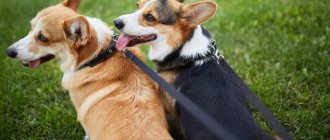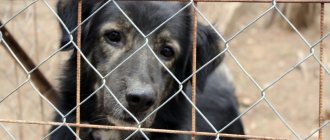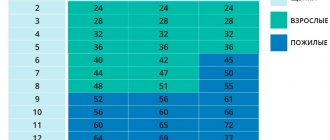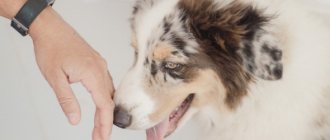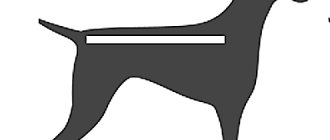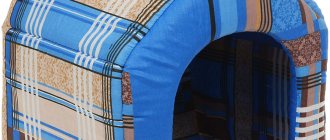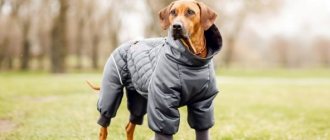Basic definitions
First, you need to understand the terminology - all purebred animals when sold have a document - a puppy passport (metric, card). It contains all the information about the baby:
- date of his birth;
- breed and color;
- nickname;
- information about parents and breeder.
If you make a choice in favor of a purebred baby, make a purchase through a specialized nursery. Puppies of Yorkshire terriers, Pekingese, Chihuahuas and others have a high cost. If there are offers on the market with low prices, most often it is a scam or they will sell you a mestizo.
Upon reaching the age of 6 months, the puppy passport is exchanged for a pedigree. This can be done by the owner himself or by the breeder if he sells the puppy at an older age.
Important: pedigree cannot be registered earlier than 6 months. If you are offered to buy a 3-month-old puppy with a ready-made pedigree, this is a scam.
But what should you do if a dog enters a house without a passport or pedigree? How to find out the breed of your dog?
Terms:
- Pedigree - a dog that has value in the breed, confirmed by a document. They are usually branded and microchipped;
- Metis is a dog whose breed cannot be documented, since it is the descendant of two different breeds, a purebred animal and a mongrel;
- Phenotype. If you hear the expression “by phenotype, an individual can be classified as a member of the husky breed,” this means that in its external characteristics the dog is similar to a husky, but there is no documentary evidence of this;
- Cur. Animals that do not have breed characteristics.
Photo: picryl.com
If the dog turns out to be mongrel...
If all attempts to determine the purebred of an animal are unsuccessful, it means that a lot of genes are mixed in the dog, and it is not purebred. This situation is especially unfortunate if the pet was purchased as a puppy with the hope that it would have specific characteristics.
People should remember that dogs of the Friend breed are no different from their purebred counterparts. They are just as devoted, faithful, they can give just as much love to their owner. They are no worse than purebreds.
Don't give up on a mongrel just because she doesn't belong to the elite class. Accept her and she will respond with boundless love. After all, the main thing is not the purity of the blood, but the spiritual qualities that your four-legged friend will give you.
Additionally, watch the video about determining the breed of a dog:
We determine the breed by appearance
Identification of pedigree by appearance is one of the most accessible methods for independent determination. First, you need to determine roughly what breed group your pet belongs to and find the standards. There are international descriptions that are supplemented by national canine associations.
Age
If we talk about adult individuals, then it is possible to determine the breed only at the age of over one year, and for some groups this threshold is two years, so it is worth starting with determining the age.
The most common way to determine age is to examine the teeth. There is not too much reliability with this option: any animal, as a result of living on the street, can have the teeth of a very elderly animal. In any case, fully formed, non-baby teeth will help determine who is in front of us - a puppy or an adult dog, which is very important for miniature breeds: Spitz, hairless crested, lapdogs.
https://www.youtube.com/watch?v=Mo3EFjd5Y74
Size
Next, you need to examine the animal’s body, measuring its basic parameters, thereby making it possible to classify the dog into a specific group of breeds:
- dwarf - an adult dog typically weighs up to 5 kg, height at the withers - no more than 30 cm;
- small – from 5 to 1 kg, height from 30 to 40 cm;
- medium breeds - weigh no more than 22 kg, height parameters from 40 to 55 cm;
- large – from 25 to 30 kg, height from 55 to 67 cm;
- very large - from 40 to 55 kg, height at withers from 70 to 75 cm;
- giant - the rest, whose representatives exceed the above indicators.
The size of an animal within a breed group depends on gender: according to the standard, boys are usually noticeably larger than girls.
Skeletal structure (skeleton)
Studying the structural features of the dog’s skeleton, coupled with other external signs: the structure of the skull, the position of the ears and the structure of the auricles, the height and structure of the paws, will help to classify the dog into a more specific breed group. We can highlight:
- narrow-boned - narrow pelvis and narrow chest. The dogs are light and thin. with a sunken belly, thin slender but muscular legs. Adapted to fast running, they have a streamlined body shape and a dry constitution. Prominent representatives: Otterhound, Greyhound, Russian Greyhound, English Hound, Basenji, Jack Russell and Toy Terriers;
- medium - the chest is wider than the pelvis. This includes a wide range of breeds, mainly service breeds;
- broad-boned - the pelvis and sternum are equally wide and massive. These are physically developed animals with wide, high paws, a large skull and steel jaws. Typical representatives: retriever, alabai, Saint Bernard, mastiff, bandog;
- shortened body, shaped like a square. The hind limbs are usually somewhat shorter than the forelimbs. Representatives of the group are characterized by a shortened muzzle and nose. Most often, such a skeleton is found in miniature and dwarf breeds: Spitz, Pekingese, Maltese.
Additional signs will help determine the breed of the dog.
Additional signs
Let us highlight the important breed characteristics that can be found in international breed standards:
- posture - standards establish different inclinations of the spine: straight, with an inclination. Example: For Shepherd dogs, the standard incline is 20 degrees. If the angle changes, this is a reason for culling or treatment;
- structure of the skull. The dog’s head is examined in great detail, all the details matter: the severity of the transition from the forehead to the nose, the shape of the head and size;
- ears – location on the head and shape: high, hanging, erect or cropped;
- teeth and bite: standards for the shape of the bite, shape and color of teeth are established for each breed;
- eyes - color of the iris and white, shape and fit relative to the nose, depth. For example, bull terriers are considered to have a unique eye shape - triangular. The color of the fur around the eyes matters: for colored lapdogs there is a requirement - the contour of the eye should be outlined in black;
- neck. The maximum angle of inclination of the neck to the spine is important;
- tail – various standards for each breed: docking requirement, positioning relative to the back;
- limbs. There are different standards for the front and hind paws. Most of the requirements of the standard have a mathematical expression and require scrupulous measurements and calculations;
- coat is the most important feature. Not only the admissibility of colored colors matters, but also the condition of the coat itself: hard, straight, curly, etc. Often at exhibitions, a dog’s phenotype is determined by an expert by touch;
- color Note that the main colors are: black, white, brown and red. The remaining shades only indicate lightening of the primary colors and are complementary.
At what age is it better to take?
It is impossible to give a definite answer to this question - it all depends on the circumstances. It is worth considering clearly the pros and cons of a particular age:
- 1 month One of the main advantages is that such an animal will cost less, since the breeder has not yet spent money on feeding.
You will also have the opportunity to choose a suitable candidate from the entire litter. As for the rest, there are many disadvantages here - you need to protect such a pet from diseases before he receives the necessary vaccinations, the immunity of such a puppy is weak, since he ate his mother's milk, and now he has to switch to food. You will have to create a veterinary passport for him yourself. The character of a puppy at this age is also very difficult to determine, so you can be very disappointed. It is worth playing with the animals from the litter to understand who behaves and how, if you want to choose a puppy for work and training in some activity. - 45 days The breeder receives permission to sell and prepares documents for each puppy. At this moment, the bitches run out of milk, and the babies become stronger - their immunity is healthy. When buying such a pet, you do not need to be vaccinated, which means that the risk that it may get sick is minimal. The only negative is the difficulty in determining the dog’s character. In appearance, it may seem that the puppy is lethargic and motionless, but in reality he can be quite active. At this age, the animal’s potential is not fully revealed. As for the price, the cost will be higher, since the breeder will spend money on vaccinations and obtaining a veterinary passport.
- 4-6 months This decision will be good from all sides. The puppy is already quite old, and you can immediately see his character and habits. But there is one thing - many buyers are sure that the puppy has serious problems, since he remained with the breeder until such an age. But you shouldn’t think that this makes it of poor quality and not worth buying. If you like his appearance and character, have a beautiful color and look completely healthy, you can safely buy such a dog. The price will be higher, since the breeder has already spent money on food, vaccinations and documents for the animal.
Age 45 days is considered ideal.
At what age can I take it?
1. if this is a dog for the soul, then the best decision is to take it at the age of 1.5-3 months 2. But, if this is a dog for work and service, then it is worth taking an older puppy, whose age is from 3 months. It will immediately show whether the puppy can cope with the task assigned to him.
other methods
By photo
The Internet offers specialized online services that determine the breed of a dog based on a photograph of the pet:
- https://www.bing.com/visualsearch/Microsoft/WhatDog;
- https://poroda-sobaki.by-photo.net/;
- https://www.proandroid.net/software-3659-magic-dog.html.
According to the test
The service allows you to determine the breed of a dog by verbal description. This is necessary, for example, if there is no photograph of the animal. In fact, the service helps to draw a conclusion based on the data collected by the owner and measurements of the pet:
- https://whoyougle.ru/services/dogs.
DNA
A new service offered by veterinary clinics is DNA testing to determine the breed. Let us note the disadvantages of this method:
- high price;
- a small database of samples for comparison, since the service is new;
- the result is not always reliable due to the presence of “impurities” in the selection.
Brand
It is easier to get information about a dog if there is a readable brand. To do this, contact a cynological organization, which one is determined from the RKF stamp database:
- https://www.dogsfiles.com/index.php?ind=tatoo;
- https://rkf.com.ru/razvedenie/.
Expert help
A veterinarian or dog handler can provide primary assistance in determining the breed. To confirm your guesses, you can contact a breed expert - in a club or nursery, talk with a breeder, or discuss the situation on an online forum.
Search directory
Once a complete description has been compiled, you can move on to finding a good reference book. Printed sources usually provide the most complete description of any dog breed. The list of varieties is quite large. You can search for similar directories on special services. All characteristics should be clearly visible in the photographs posted there.
Once you have found a photo of an animal that is somewhat similar to your pet, study it more carefully, especially the description of the standard of this species. As we have already mentioned, being not purebred greatly complicates the search, because mestizos can contain many different breeds mixed together.
If you managed to determine the standard, then you should double-check the result using other information sources.
I would like to note that the standard is a set of the most common characteristics. It is necessary to understand that slight deviations from the rules are always possible. That is why there are often dogs on the streets that do not correspond to the stated description, and therefore they are considered mongrels. To find a pet relative, you need to be patient.
How to determine the breed from a puppy
Determining whether a puppy is purebred is a difficult task even for an experienced expert. Many purebred dogs under the age of 6 months are completely different from the adult dogs that will grow up from them: bobtail, Tibetan terrier, saluki, bearded collie, otterhound. And for more famous and familiar dogs, determining whether a puppy is purebred by appearance is often a failed task. The breeder's reputation in cynological circles is a guarantee of purchasing a purebred baby.
If the future pet does not have documents confirming its breed, perform all the same actions as for an adult, guided by the standards, but for puppies. It is not recommended to do this on your own; it is better to seek the help of an expert. In addition, specific signs can help: the Shar Pei has folds, the Bull Terrier has triangle eyes and a skull shape “like a pig”, and the Hairless Mexican has no hair.
Photo: defense.gov
Character
Before purchasing a particular breed, you should study its historical significance. There are varieties that were bred only for beauty. Previously, people needed dedicated helpers during hunting, protectors, and rescuers. Therefore, in the process of breeding a new breed, attention was paid not only to beauty, but also to the behavioral characteristics of the animal. The instincts that were necessary were highlighted, while others, on the contrary, were drowned out, making them less obvious. As a result of such experiments, working qualities of dogs emerged that characterize a particular breed and are their distinctive features.
Previously, shepherd dogs were shepherds' assistants, so this behavior is in their genes. If along the way they meet a sheep or a cow, they will immediately begin to fulfill their official duties: they will gather the animals into a herd and protect them. They can behave the same way towards children and other people.
Shepherds are natural helpers of shepherds
Note! Hunting dogs have a keen sense of smell. When they see the prey, they make a stance. They have a highly developed pursuit instinct, but they cannot properly act as a guard.
Answer
If a person purchases a puppy from a nursery or from reputable breeders and has the necessary documents in hand, questions about determining the breed arise extremely rarely. If a dog came into the house by chance - you picked up a lost dog, bought a dog you liked at the market, or purchased it through a bulletin board on the Internet - you want to find out what type the pet belongs to.
The main points of determining the breed are discussed below. Take into account a number of necessary signs.
General recommendations
Here are some general recommendations for resolving this issue:
- Carrying out a DNA test. If you have already lost hope and don’t know what to do, then you can take a DNA test. Today the cost of such a test is quite small. The disadvantage is that there are not many animal species in the database yet, but there are the most popular ones. In any case, such a test will help make your task easier.
- Another tip is psychological testing. Check the natural instincts of the animal, this will make it possible to determine at least the group. That is, you can try to determine the herding qualities of a pet. As a rule, tame dogs are not at all interested in this.
- Consultations with specialists. Dog handlers and veterinarians always know more about animals than other people. Even if the veterinarian has not encountered a particular variety, he has a better chance of identifying it.
Briefly about the main thing
- You can determine the breed yourself;
- There are several ways to determine: by external signs, using online services, DNA analysis, brands;
- The most accurate way is to read the mark;
- Without a pedigree, a dog is considered mongrel, although it belongs to a certain breed by phenotype.
Have you ever had to independently determine the breed characteristics of a pet? Which method did you use? Tell us about your experience in the comments.
Sources:
https://tvoidrug.com/breed/svojstva/opredelit-porodu.html https://prohvost.club/sobaki/porody-sobak/kak-opredelit-porodu-sobaki.html https://petguru.ru/interesnoe/ kak-uznat-porodu-dog
Cat classification
Cats are not distinguished by a variety of external forms, which cannot be said about dogs. Even despite their abundance and distribution throughout the planet, all cats are, in principle, very similar.
Active breeding work by felinologists began only at the beginning of the last century. And even at the present moment, when a clear gradation according to breed has appeared, it is difficult to judge how many purebred cats there are in the world. It is worth recognizing that the majority of domestic cats are still ordinary “nobles,” that is, completely outbred.
To date, the cat world has about 60 breeds, which also include two hundred varieties. According to the current classification, cats are conventionally divided into 5 large groups, which differ from each other in the length of their fur and features of their body structure:
- longhaired: Burmese, Persian, Turkish, Norwegian Forest, Maine Coon, Somali, Balinese, Siberian, Cymric;
- shorthaired with a strong constitution: European, American, Burmese, exotic;
- shorthaired with medium constitution: blue, Abyssinian, Burmese, Bombay, Korat;
- short-haired with a slender body: Siamese, Oriental, Singaporean, Tonkinese;
- cats with deviations in skeletal structure and mutations: male, Scottish fold, bobtail, multi-fingered, sphinx, rex.
Mixed Breeds – Benefits and Pitfalls
Mestizos have a more moderate temperament, since “gene” character traits are not common in mixed races. Of course, a puppy can be very active, independent and wary of other individuals. However, it cannot be compared with purebred dogs. The manifestation of “working” traits is an accident among mestizos. Such pets show greater sociability, adapt more easily to their owner, and quickly adapt to a new way of life.
As a rule, mixed breeds are healthier because they have an impressive diversity of genes. This is achieved due to the fact that the puppy’s parents do not have the same genes, so the risk of hereditary diseases is practically reduced to zero. But purebred dogs are prone to pathological characteristics, among which the leading ones are heart defects, obesity and diabetes.
Crossbreeds also differ in average size. Among mestizos, it is difficult to find an elongated body, like a dachshund, a barrel-shaped body, like a bulldog, or excessive weight, like a Diver. Average proportions help mestizos maintain excellent health and vigor.
Purebred dogs have an easily calculable predisposition to certain ailments. Which makes caring for them much easier. But among mestizos, it is almost impossible to calculate the “risk factor”. The worst option is to cross breeds that have common diseases. For example, a puppy whose parents were a poodle and a spaniel will be at risk for ear infections, eye diseases and hip problems.
Let's sum it up
Choosing a mixed breed will be an excellent option if you are prepared for the unpredictable nature of your pet, as well as for treating the animal if various diseases are detected. It is almost impossible to determine the future size of a puppy. Therefore, when buying a mixed breed for keeping in an apartment, there is a certain risk. A cute puppy can easily turn into a large individual.
When crossing different breeds, it is quite difficult to determine the dominant gene. So you can become the owner of a loving Rottweiler, a shy retriever or an overly large Chihuahua. It is impossible to know which gene will win the battle of the breeds. Often aggression dominates over friendliness, activity over calmness, cowardice over protective inclinations.
The advantages of mixed breeds include more developed intelligence, tactfulness and communication skills, and the ability to get along in almost any conditions. Mixed breeds are also more affordable.

